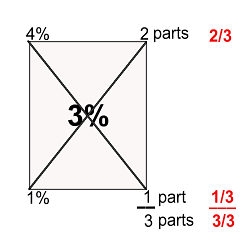Monthly Archives: April 2006
Disadvantage Milk Paint
Hi, Milkfans
The only disadvantage I can think of is that the milk paint is a denatured protein stain and therefore will not be removed by normal solvents and even water-based solvents.
So no stripping – but you can paint it over. Not a problem when you paint the kids’ building blocks, because you won’t want to change their colour too often 😉
Kind regards,
Leon the Milkman
Grazing Dairies Are Making More Money
Hi, Dairy Farmers
When it comes to household income, farming background and technology use, dairy farmers who use managed grazing aren’t all that different from farmers who operate more traditional dairy enterprises. In fact, they tend to be more profitable. That’s according to a new report from the UW-Madison Center for Integrated Agricultural Systems and Program on Agricultural Technology Studies. The groups compared production systems, technology, labor, performance and satisfaction with quality of life on grazing dairy farms and more conventional dairy farms.
Read the rest of the article here:
http://www.wisconsinagconnection.com/story-state.cfm?Id=498&yr=2006
Regards,
Leon the Milkman
Milk pH
Hi, Milkfans
The pH of milk should ideally be between 6.60 and 6.75.
When milk pH goes into the 6.5’s it is considered to be turning sour and above 6.80 there is reason to suspect mastitis(udder infection) or alkaline soaps – usually because of insufficient rinsing of tanks after cleaning.
Regards,
Leon the Milkman
How to use Pearson’s Square
Hi, Milk Scientists
Need to know how much milk to mix with another to get a certain butterfat %?
Use the Pearson Square or the “milk butterfat square”. Subtract diagonally and convert to the positive if not. Mix the parts as calculated and you will get the center value ( the one you wanted ).
In this example 2/3 of the final volume of the 4% milk must be added to 1/3 of the 1% milk to get 3% milk. So if you wanted 1000 L of 3% milk, then you would need 666 L of 4% milk and add that to 333 L of 1% milk.
This also works well for juices with different concentrations (Brix).
Kind regards,
Leon the Milkman
Remaining milk – calculation
Hi, Dairy Scientists
You start off with 3.8% butterfat and you skim off to 2% – what is the volume of milk remaining?
Let us say you started off with 1000 liters of milk and your resulting cream has a butterfat of 40%
3.8% – 2% = 1.8% difference per part
1.8% x 1000 liters = 1800 parts of fat to be removed
1800 ÷ 40% = 45 liters of cream
1000 liters – 45 liters = 955 liters of milk remaining.
Don’t ask me why or how – this is the way to do it – agreed?
Semi-convinced,
Leon the Milkman
Buffalo milk for China
Hi, Guys
It seems that as much as Japan do not want to drink their milk, China does.
They want cheese and they have their eyes set on Buffalo milk to be the supply – read more:
http://news.xinhuanet.com/english/2006-04/22/content_4459931.htm
Also check this link out if you want more on China: A world of possibilities for agri-business in China. : An article from: State News
Kind regards,
Leon the Milkman
Cow Abduction
Hi, Cow Lovers
I’ve seen some weird stuff, but this takes the cow:
If only it wasn’t true.Â
Regards,
Leon the Milkman
Wired Cow
Goat Milk Composition
Hi,
Milk composition differ hugely from one individual animal and one species to the next. However I have found goat milk in our region to have lower solids than cow milk.
Usually in the range of 3.5% Fat, 3% Protein and 4.5% Lactose.
I think some of the beneficial differences between cow milk and goat milk can be attributed to different proteins and fatty acids in the goat milk.
Like the medium chain triglycerides in goat milk that do not follow the same metabolic pathways as other fats in the diet, but are absorbed more easily.
Till later,
Leon the MilkmanÂ
Gouda – Sweetmilk Cheese?
Hi, Cheese Fans
Gouda cheese is a sweetmilk cheese. What does that mean?
Well, during the cheese making process some of the whey is removed and substituted with water. This removes lactose and thus in effect some of the acid forming capacity of the whey, because the lactose is converted to acid by the bacteria that you add.
Therefore you end up with “sweeter milk” and therefore sweeter cheese.
Sweet isn’t it!
Leon the Milkman
Â








